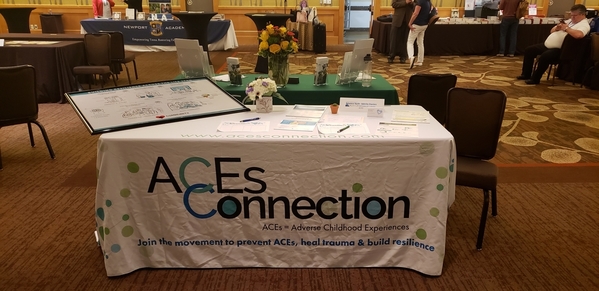It is no secret that Adverse Childhood Experiences and trauma in childhood have a wide-ranging impact on health-risk outcomes across an individual’s lifetime. This includes behavioral, physical, and mental health impacts, such as smoking, alcoholism, and substance use; depression, suicide attempts, heart disease, and cancer.
At the 32nd Annual Northwest Conference on Behavioral and Addictive Disorders, topics focused on trauma treatment, neuroscience and therapy, and the intersection of mental health and addiction. The first two Program Objectives for participants were:
- Identify treatment approaches and develop counseling skills for a range of issues in mental health, behavioral health, addictions and co-occurring disorders.
- Identify the neuropsychological and neurobiological underpinnings of addictive disorders, compulsive behaviors and other problematic behavior and the therapeutic implications of these findings
Exhibitors at the conference included several organizations local to the Seattle area whose work mirrors that of the conference’s topics, including Northpoint Washington, Gray’s Harbor Community Hospital, Bayview Recovery Center, and Residence XII.
In speaking with conference attendees, I was able to share the way that ACEs are relevant beyond work with children and youth. For example, one individual mentioned that they work with geriatric patients. This was a perfect chance to discuss how geriatric patients may still be experiencing impact of trauma from their childhoods, and how we can still scaffold the building of resilience and hope. I encountered several people who had heard of the “Adverse Childhood Experiences” concept broadly, which opened the door for conversation about more specific details they were not familiar with previously. It was a pleasure to meet others in the field who were familiar with Adverse Childhood Experiences and eager to learn more.
On the last day of the conference, exhibitors typically tear down their booths before lunchtime. Because of this, I was able to move to a table right outside the doors leading to the conference and catch many people as they came back from lunch. It felt like a great opportunity to have a monopoly on everyone’s attention as they returned! It worked well and allowed me to connect with even more people and share how ACEs Connection is such an incredible resource.





Comments (0)